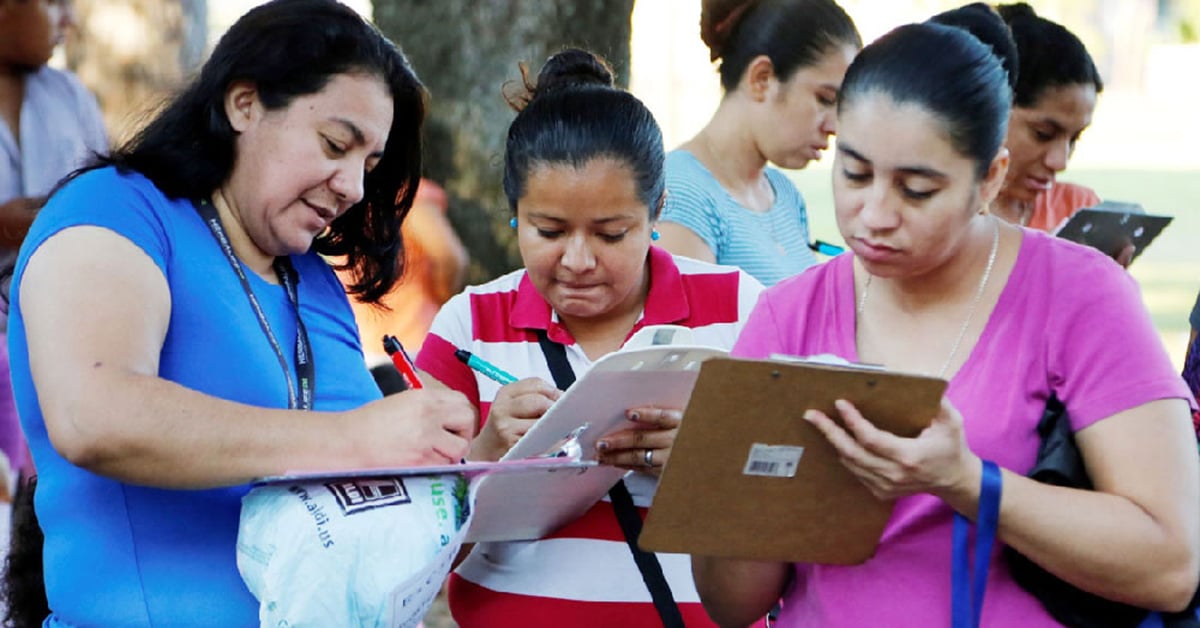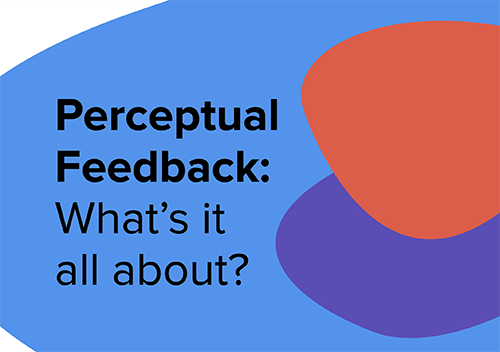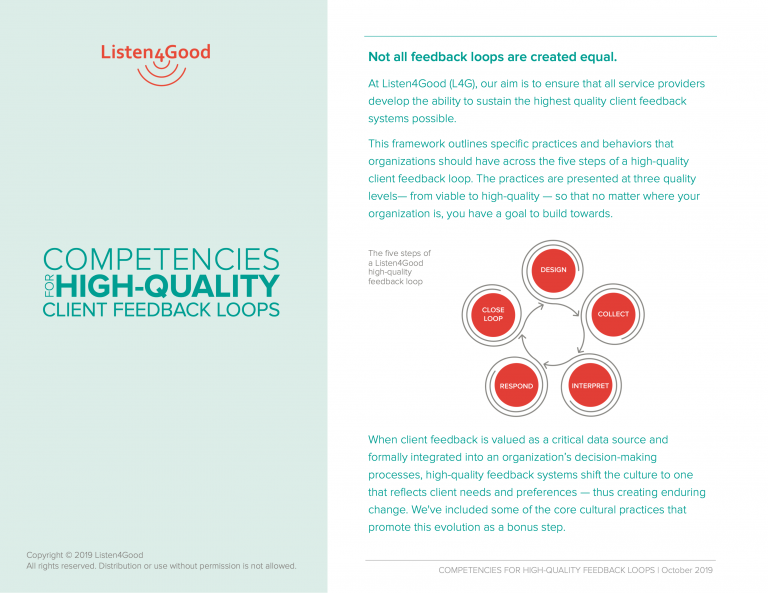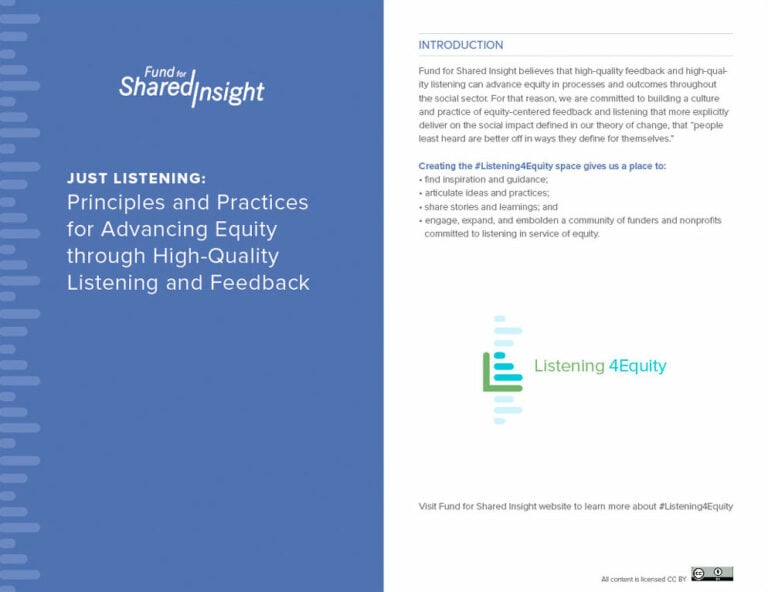What Is Feedback?
Feedback is a simple yet powerful tool for including the perspectives and valuing the lived experience of the people most impacted by the work of nonprofits and philanthropy. Done right, it can lead to meaningful change in the way organizations make decisions, deliver services, and relate to clients. It can also enhance an organization’s commitment to equity, diversity, and inclusion. But not all feedback practices are equally beneficial or effective. Learn how Fund for Shared Insight defines high-quality feedback loops.

We are a part of a growing field of funders, nonprofits, aid organizations, and government agencies that are promoting feedback as a tool for learning from and engaging with the people and communities they serve.
Shared Insight defines feedback as the systematic practice of listening and responding to the perspectives, feelings, and opinions of people who have direct experience with an organization, program, or service. One of our goals as a funder collaborative is for high-quality feedback to become a widely-practiced norm and complement to monitoring and evaluation in the social sector.
Because feedback can mean different things to different people, almost all organizations will report that they already use feedback. However, the methods used to gather feedback may be episodic and/or informal, and the results may not be used for learning and change. That’s why we believe organizations should implement what we define as high-quality feedback loops.

What Is a Feedback Loop?
For feedback to be of greatest use to an organization and empowering for the people giving feedback, the process should involve more than asking for people’s opinions or putting out surveys. Listen4Good, the national feedback program we launched, recommends that feedback first be framed as a loop in which an organization takes in feedback but also must do something with it.
Listen4Good recommends a multi-step process that includes designing the survey, collecting the responses, interpreting the results, responding; and going back to those who were surveyed to share what was heard and how the organization is going to respond to the feedback. This last step — often the most challenging but critically important — is called “closing the loop.” Together, these steps constitute a feedback loop.
DESIGN
Work collaboratively to develop a survey that focuses on client experience—using Listen4Good core questions as a foundation.
COLLECT
Prepare clients to offer candid opinions and tailor data collection to what works best for them.
INTERPRET
Use proven analytical tools to draw insights from client responses, with an emphasis on voices least heard.
RESPOND
Make organizational, programmatic, and operational changes based on client feedback.
CLOSE LOOP
Share results with your clients and explain how you’re responding to what you’ve learned.
What Is a High-Quality Feedback Loop?
We use “high-quality feedback loops” to describe feedback practices that:
- Employ simple yet flexible data collection approaches
- Capture a large number of representative client voices and gather credible, candid feedback
- Identify areas for celebration and areas for improvement, while shedding light on differential experiences across specific client groups
- Engage organizational decision-makers (and external stakeholders, such as funders) to learn from client feedback and implement changes based on what is learned
- Close the loop by sharing back with clients what was learned from listening to them and the specific ways that an organization is responding to their feedback
Articles and Resources
Feedback Labs, Updated 2025
Drawing on the latest research and evidence, these eight principles outline the essentials for effective, equitable, and impactful listening and feedback.

Ekouté Consulting, Updated May 2021
This paper offers a consistent and practical definition.

Listen4Good, October 2019
This framework outlines specific practices and behaviors that organizations should have across the five steps of a high-quality client feedback loop.

Related Items
- Juan Clavijo and Scott Campanario
- Fund for Shared Insight
- Fay Twersky and Fred Reichheld Harvard Business Review
- Frank Daidone and Benilda Samuels, Nurse-Family Partnership Stanford Social Innovation Review





